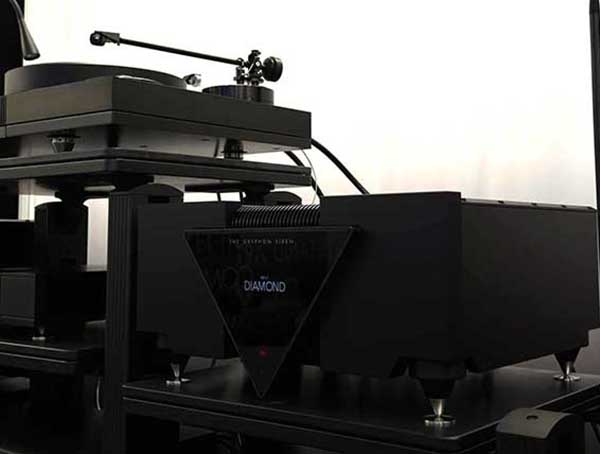Gryphon Apollo Turntable & Siren Phono Preamp
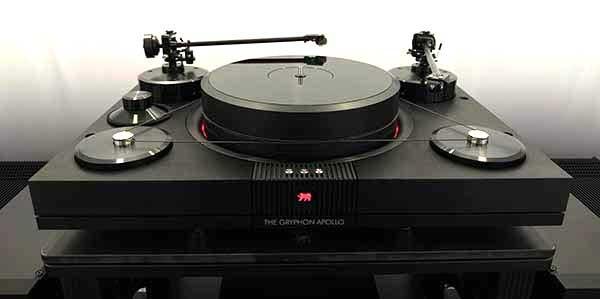
High End Munich 2024 is officially getting underway across the Pond in just a few hours, but we have some more cool new products to look at before the doors open on the show. Today, we’re going to look at a pair of upcoming products from Gryphon — namely, their Apollo turntable and Siren phono preamp.
According to Gryphon — founded by Flemming E. Rasmussen in 1985, and currently distributed in more than 40 countries worldwide — both the Apollo table and Siren phono preamp will be unveiled on Thursday, May 9, at High End Munich in Atrium 4.1, Room E120. In addition to these two new analog products, the demo system in that room will also consist of Gryphon’s Commander preamp, Apex mono amps, PowerZone AC optimizer. and EOS 5 loudspeakers. The demo system will be wired with Gryphon Vanta cable and mounted on the company’s StandArt equipment racks.
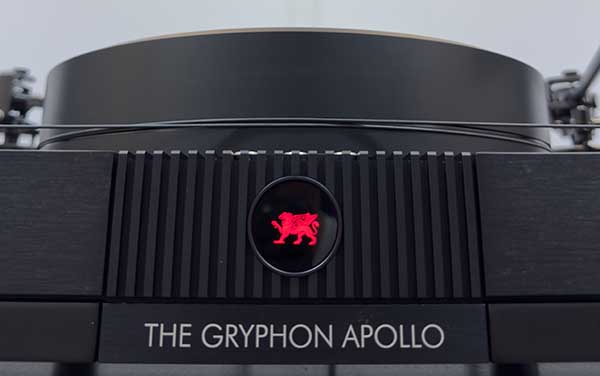
The Gryphon Apollo turntable is said to be the “culmination of a once-in-a-lifetime collaboration” between Soren Slebo of Gryphon’s own design team, respected turntable designer Helmut Brinkmann, cartridge leader Ortofon, and the Aarhus Technical Institute of Denmark.
According to Gryphon, Brinkmann was “given the opportunity to create his ‘Dream Turntable’ without compromise.” Apollo utilizes two of Brinkmann’s proprietary Sinus belt-drive motors placed 180 degrees from each other. As Gryphon noted in an official press statement, “While the benefits of multiple motors are well-known, overcoming the potential problems of dual motor design required a great deal of ingenuity.” Not only is the Apollo Brinkmann’s first multi-motor turntable, it is also the first table for which he’s developed a digital speed controller. In addition to synchronizing the two motors, Apollo’s controller is said to be “more accurate” than analog equivalents, and will “never require” calibration. Brinkmann’s techniques for “soft” motor control is something that has been refined for more than 40-plus years.
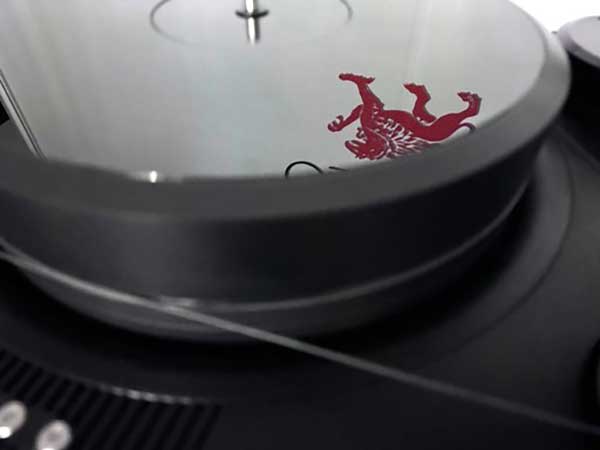
Based on Brinkmann’s RöNt technology, Apollo’s bespoke supply employs the proprietary BZ 34 “Tube Rectifier Simulator,” while semiconductors replace RöNt’s tubes. Apollo tables are said to have a higher output current, enabling two motors to be optimally driven. A fully discrete, mechanically and electrically separated power source with dedicated transformer supplies the bearing heater and platter light.
Apollo’s industrial design, as authored by Gryphon’s Soren Slebo, combines visual beauty with ideal rigidity and resonance control. Apollo’s chassis is based on a laminated “sandwich” construction of anodized aluminum, Kerrock, and “Smart Stack,” a damping compound patented by Denmark’s MENETA Group. Apollo’s motors are entirely decoupled from this structure, each mounted on its own, optimized subchassis.
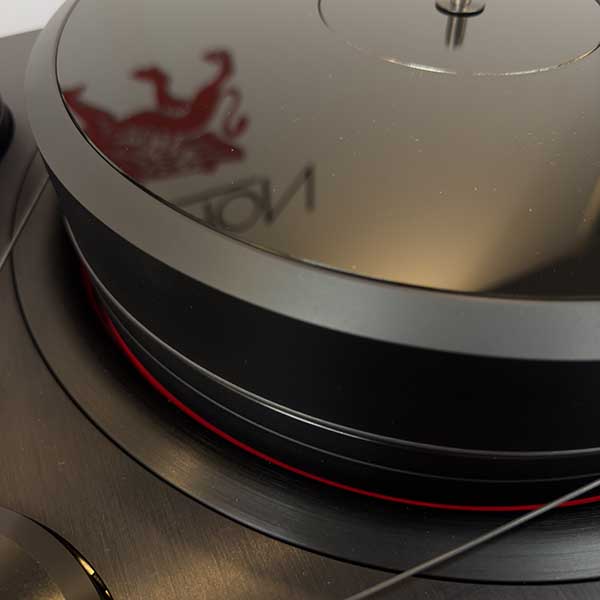
Brinkmann has traditionally hard-anodized their tonearm tubes due to the material’s “very high” transmission speed of sound (9.900m/s), evacuating resonances from the cartridge as quickly as possible. Thanks to a joint research project with Denmark’s Aarhus Technical Institute, Apollo’s arm tubes are diamond-clad (technically, CrN-SD + DLC-TR), and are said to yield “the fastest sound transmission of any known material — 18,000m/s — ensuring the quickest evacuation of resonance.”
Gryphon also worked with Ortofon to create a cartridge whose performance characteristics have been specifically tailored to that of the Apollo. Starting with the MC Diamond cartridge, Gryphon developed a special DLC-TR coated, SLM titanium body to match the Apollo tonearm and then tuned cartridge compliance accordingly, resulting in what’s known as the Gryphon Black Diamond DLC cart.
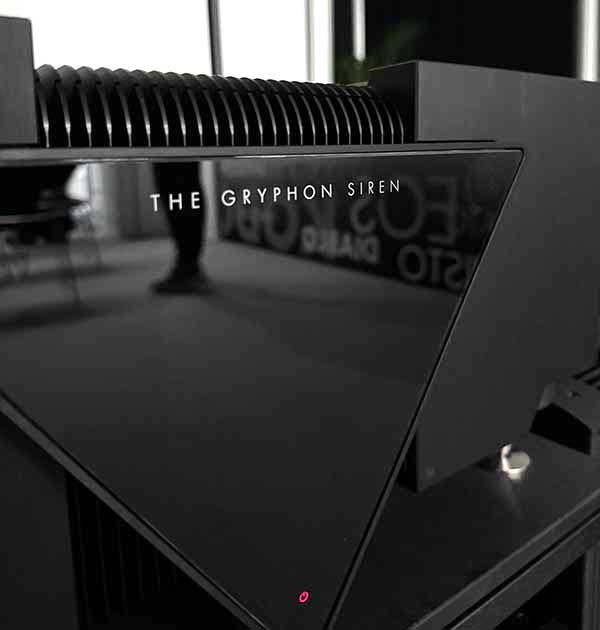
Also being introduced at High End Munich 2024 is the aforementioned Siren phono preamp (seen above, in a heroic pose), which shares its sculptural, “Nordic Noir” aesthetic with Gryphon’s Apex power amp and Commander preamp. The Siren’s 4.3in TFT capacitive touchscreen with 4mm hardened glass panel is identical to that of the Commander, as is Siren’s dual-mono Power Supply Unit (PSU). Weighing over 83lb (38 kg), Siren’s “massive” PSU features local, fully regulated power supplies for all sensitive voltage amplifying stages. In addition to separate left- and right-channel power supplies, a third, purpose-engineered supply for all digital functions maintains total separation of digital and analog signal paths, all the way back to the AC cords.
Like Apex and Commander, Siren boasts four-layer printed circuit boards with 70µ copper traces. These boards also contain Mundorf MCap ZN capacitors, low-inductance Vishnay resistors, ROHM matched transistors, and ultra-low noise ZETEX transistors. Sensitive audio circuitry is floated on a proprietary isolation base whose “Constrained Layers” of Kerrock, Bitumen, and steel are said to “optimize component damping and eliminate smearing of fine detail.”
The Siren phono preamp also features true dual-mono configuration, zero global negative feedback, and fully discrete, fully balanced circuit topology. Minimal internal wiring and the use of PC-mount XLR and RCA connectors are intended to further minimize noise and wiring while enhancing product consistency and longevity. In order to maximize system flexibility, the Siren includes four user-selectable inputs — three XLR, one RCA — while MC load impedance and input can be chosen via the remote handset. The 12V buss links simplify system power-up and power-down, while a rear-panel USB 2.0 socket enables “simple” firmware upgrades.
According to Gryphon, both the Apollo turntable and Siren phono preamp are expected to be available by late summer 2024, with each respective SRP to be announced shortly.
For more about Gryphon, go here.
To find an authorized Gryphon distributors and dealers, go here.
